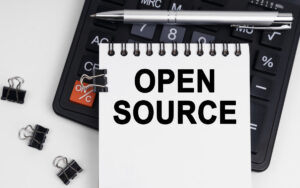Learn about the top project management software and tools you can leverage to keep your projects on track and achieve success.
Project managers have their work cut out for them. There are many factors to consider, resources to coordinate, and pitfalls to navigate. Project managers have to juggle many different things and have their bosses and stakeholders looking over their shoulders, expecting results. No pressure!
The more project management tools managers can master, the better. This fact brings us to this article, where we highlight the best project management software and the best project management tools. And yes, there’s a slight distinction between the two.
We will also touch upon free project management software, an excellent resource for organizations on a tight budget. Free project management tools can help small companies or businesses just starting to improve their odds of success, freeing up resources to bolster the enterprise and ensuring a long, successful run.
But before we get into the concrete listings of the best project management software, the best project management tools, and a project management program to learn from, let’s cover a few relevant topics.
What is Project Management Software?
Project management software is defined as software employed by an impressive range of businesses and industries for planning projects, allocating resources, and scheduling. The software also functions as a platform for improving project stakeholders’ collaboration.
Although the terms “project management software” and “project management tools” are often used interchangeably, and rightly so, there’s a subtle difference. Some project management professionals refer to a collection of project management software as a project management tool. Or, to put it another way, a project management tool is a project management software bundle.
However, some software vendors classify project management tools as specific utilities or applications within a software package, such as templates, tables, or charts.
What Are the Advantages of Using Project Management Software?
The best software for project management accomplishes the following:
1) Helps teams to keep many tasks in perspective and gives the team a better understanding of priorities
2) Improves communication and fosters teamwork across an organization
3) Provides leadership with a macro-level view of the project’s progress
4) Helps keep costs under control and manages budgets
5) Helps with resource allocation and prevents teams from burning out
6) Makes it easier for groups to collaborate remotely, especially if they follow a hybrid work model or are scattered across a wide area
7) Aids project leaders and teams in assessing and managing risks and dealing with uncertainties
What Are the Common Features in Project Management Software?
We’ve discussed the functions the best project management software or tools should include. Now, let’s shift focus and explore the common characteristics that allow project management software to deliver those benefits.
Here are the six functionalities that all good project management software must offer:
1) Schedules
Time is money, so time management is money management. The best tools offer Gantt charts, calendars, or milestone tools that help professionals understand a task’s place in a project and how much time has been allocated to finish it.
2) Task lists
Lists help project managers assign and update tasks and statuses so team members are on the same page.
3) File sharing
File sharing is the bedrock of collaboration, and the best project management software allows team members to share and organize essential project documents, thereby eliminating wasted time searching for files.
4) Budgeting and Resource Allocation
This function relates to scheduling. The best project management software tracks expenses and helps teams stay within budget. Additionally, good project management tools ensure that the right people are working on the right tasks and help avoid pitfalls such as duplication.
5) Communication
Communication is critical to any successful relationship, which is a vital element in project management, as a smooth flow of communication leads to quick and easy problem-solving.
6) Reporting
Finally, there needs to be a means of accountability. All team members need to provide regular updates on the project. Reporting is also an excellent benefit for project managers who want to ensure the project moves smoothly and tasks are performed promptly.
How Can You Pick the Best Project Management Software Tool for Your Team?
Every company is different, as is every project. There are large, established companies, aspiring startups, and small-to-medium businesses — and they inevitably have projects requiring management.
You can choose the best project management software by getting a good idea of what’s out there (which is why you’re here, so that’s a good start!) and note what features each offering provides and which features the software prominently calls out. For instance, if time management is a chronic challenge for your team, then a project management tool that excels in scheduling would be best.
Or is your organization focusing more on costs than going for a project management tool that’s relatively inexpensive? Maybe you can find an excellent free project management tool to help get the project rolling!
Perhaps your team is hopelessly scattered throughout the country, and no one’s spending time in the office. In that case, you want a project management application emphasizing remote collaboration and team communication.
Consider the following factors when choosing the right project management software:
1) How many people in your organization will be using this project management platform?
2) Can you try out the tool for free first? Or is there a free option available for smaller teams?
3) Does the project management software solve your issues and needs?
4) Can the project management software evolve alongside your project management needs?
5) Is the project management software easy to implement?
To sum it up, everyone’s needs are different. So, identify your needs and find the software that’s most compatible with them.
The Best Project Management Software in 2024
Here’s our breakdown of the ten finest project management software and project management tools available today.
Monday.com
This simple project management tool helps teams organize their projects and tasks visually. Managers can use customizable functionalities to create the correct workflow without knowing how to code. Monday is a splendid tool for startups and small businesses.
Integrations: GitHub, Jira Cloud, MailChimp, GoogleAds, Zoom, Google Drive, Slack, MS Teams, Outlook, Gmail, etc.
Pros:
1) There’s a free version.
2) Many templates.
3) Kanban and Gantt charts.
4) Mobile app version.
Cons:
1) Limited reporting options.
2) New features often have glitches.
3) Lower pricing tiers have limited features.
4) Advanced features have a steep learning curve.
Cost: Free for up to two seats, $12 per seat per month for three users. Other pricing is available.
GanntPro
This is a terrific project management tool for beginners. Teams can plan projects using interactive Gantt charts, break projects up into tasks, subtasks, and milestones, and set specific timelines with resources allocated. In addition, the software lets users measure team resources and availability and conduct project cost estimates. If your project team leader is inexperienced, GanntPro will help fill the gaps.
Integrations: Slack, Google Drive, OneDrive, Jira Cloud, MS Project, MS Teams, Excel, etc.
Pros:
1) Priced competitively.
2) Easy for beginners to use.
3) Saves histories.
4) Features custom task fields, critical path feature, Kanban board view, and Gantt chart interaction.
Cons:
1) No invoicing or billing.
2) Very few integrations.
3) Isn’t customizable.
Cost: Costs begin at $7.99 per user per month.
TeamGantt
TeamGantt is another excellent tool for beginners and is ideal for small businesses. Gantt charts are a big thing in today’s project management world, and this software provides the perfect introduction.
Integrations: Trello, Basecamp 2, Slack, Dropbox, and Zapier. More to follow in the future.
Pros:
1) Has great Gantt interactive charts.
2) Excellent tutorial.
3) Easy to use and very intuitive.
4) Corrects dependencies automatically.
Cons:
1) Contains no tools for budgeting or invoicing.
2) Light on communication tools.
3) Reporting functions are only average.
4) File uploads could be better.
Cost: Free option or paid plans from $19 per manager per month.
Hive
Hive is an intuitive, comprehensive, all-in-one project management software package. Hive’s fundamental design relies on action cards, which reside inside larger projects. Within these action cards, teams can upload files, tag each other, offer proofing and approvals feedback, and leave comments with @mentions.
Integrations: Hive API, Google Drive, Google Calendar, Dropbox, Zoom, Jira, Slack, MS Teams, GitHub, etc.
Pros:
1) 1,000 integrations with top work tools like Gmail, Slack, Dropbox, and Zoom.
2) Native chat and e-mail.
3) Offers workflow automation with Hive Automate.
4) Offers six flexible project layouts, such as Calendar, Gantt, Kanban, Portfolio and Table, and Label view.
Cons:
1) Limited mobile functionality.
2) Challenging to navigate.
3) Difficult to create dependent tasks.
4) Notifications appear as pop-ups instead of going to an inbox.
Cost: Hive offers a free 14-day trial. Hive Solo is free for up to ten users. Plans start off at $5 per user/per month.
Teamwork is ideal for client-facing professional service providers and agencies. It offers Kanban-style boards, Gantt chart views, project templates, and task lists.
Integrations: Slack, MS Teams, Skyvia, Atarim, Feedbucket, Stripe, etc.
Pros:
1) Includes billing and invoicing.
2) Simple and intuitive.
3) Fantastic customization options.
4) Generous storage provided in paid plans.
Cons:
1) No image markup or PDF tools.
2) It’s a bit pricier than the competition.
3) Lower tiers don’t have the best security.
4) Few integrations offered.
Cost: Free for up to five users, then plans begin at just $5 per user per month, with three users minimum, billed annually.
MeisterTask
MeisterTask is a popular, intuitive, online task management tool that offers various collaborative capabilities while providing teams with excellent user experience and clean visual design. In addition, it’s a Kanban-based project management tool that provides more streamlined offerings and pre-made workflows.
Integrations: Slack, MS Teams, G Suite, Zapier, IFTTT, MindMeister, etc.
Pros:
1) It offers Kanban boards and Gantt chart-style views for all projects.
2) It provides unlimited sections and stages for project workflows.
3) Helps team members stay focused by incorporating task limits.
4) Includes e-mail integration, timesheet tracking, and scheduling.
Cons:
1) The benefits for each price level are very different.
2) Task loading is slow.
3) Limited reports and analytics.
Cost: This software offers a free Basic version with selected core functionalities. The Pro level ($12/per user/month) provides a more comprehensive feature set for individual users. Teams benefit most from the Business ($24/per user/per month) and Enterprise (upon request) pricing levels.
Basecamp
Basecamp is one of the longest-lived project management tools around. It’s perfect for small teams but presents challenges when running multiple projects. Basecamp is cloud-based and provides various features for project managers, individuals, and marketing teams. It also offers a function that lets the client view the project’s progress and a real-time group chat feature to facilitate collaboration.
Integrations: Pleexy, Field Trip, Retool, Zoho Flow, Calamari, Timely, Ganttify, Klipfolio, Slickplan, Pro Backup, ScrumDo, Akita, etc.
Pros:
1) Can be integrated with iOS, Android, Mac, and PC.
2) Sends a daily e-mail summarizing the team’s projects, with updates and statuses.
3) Communicate via e-mail or designated discussion areas.
4) Easily integrated with other products for reporting, analysis, and time tracking.
Cons:
1) Lack of customizable options.
2) There are no milestones.
3) Doesn’t allow team members to add estimated durations or assign multiple users to a task.
Cost: Free to teachers and students. Available to businesses for $299/month for unlimited users.
Airtable
Airtable is ideal for teams that use Google Sheets or MS Excel but want to crank up their capabilities to the next level. This software is a spreadsheet tool on steroids, allowing the integration and management of traditional and rich data points, like photos, videos, etc. In addition, Airtable provides ready-made scripts and extensions that offer better project visualization.
Integrations: Google Drive, Salesforce, Zendesk, Asana, Dropbox, Evernote, Facebook, GitHub, Gmail, Google Calendar, etc.
Pros:
1) Easy to use.
2) Easy-to-use templates for various project types.
3) Lots of integrations available.
4) Very customizable.
Cons:
1) The free plan offers minimal functionality.
2) Limited internal communication features.
3) Automation is clunky.
4) The plans become expensive.
Cost: Free for up to five users. Pricing levels begin at $20 per seat per month, billed annually.
Confluence
Confluence is a great project management tool for dispersed teams, simplifying virtual project management. It also emphasizes groups that want to foster collaboration while promoting inclusion and a positive corporate culture.
Integrations: Lucidchart, Google Analytics, Google Drive, MS Teams, Slack, Miro, Presenter, etc.
Pros:
1) Features are conducive to building a positive company culture.
2) Offers seamless external and internal document sharing.
3) An extensive knowledge base encourages the retention of great ideas.
4) Large best practices template library.
Cons:
1) The plans get expensive.
2) Storage is limited in comparison to similar offerings elsewhere.
3) Glitchy search function.
4) Needs integrations and apps to maximize many of its features.
Cost: Free for up to 10 users, price plans begin at $6.05 per user per month.
ClickUp
If your teams rely on Scrum, you want ClickUp, which accommodates the Agile software development process. ClickUp offers a robust set of features such as reporting dashboards, collaboration tools (e.g., real-time editing, mentions, calendar sync, and role creation and permissions), preset and custom automation recipes, project tracking tools (e.g., checklists, timelines, Gantt charts, Kanban boards, and dependencies) and more than 1,000 integrations.
Integrations: Zoom, Slack, GitLab, Dropbox, Vimeo, Tmetric, Timely, etc.
Pros:
1) Agile friendly.
2) Free forever plan for single users.
3) Pre-built templates.
4) Advanced task management.
Cons:
1) The program’s complexity can be daunting for rookies.
2) The mobile app isn’t intuitive.
3) It suffers from time-tracking glitches.
4) The top pricing tiers can get expensive for smaller companies.
Cost: Free for one user. Prices start at $7 per member per month, billed annually.
Smartsheet
Smartsheet is a spreadsheet-like project management platform that performs all your calculations over multiple sheets. Automating workflows, creating work applications, and customizing dashboards is easy with this project management tool..
Integrations: Microsoft and Google apps, Jira, Salesforce, ServiceNow, Slack, Box, and Tableau.
Pros:
1) Sheet-to-sheet linking.
2) Many project templates and resources.
3) Ease of sharing.
4) Easily customizable dashboards.
Cons:
1) Jira, Salesforce, and Dynamics Connector are limited to the Premier plan.
2) Changes don’t update in real time.
3) You can’t customize chart colors.
Cost: A free version is available; prices start from $7 per user per month.
Wrike
Wrike is cloud-based collaboration and project management software that helps users keep track of daily operations and ensures that projects are finished within a specific frame and pre-determined budget. The app also lets you transform e-mails into tasks. This e-mail integration lets users create, assign, or edit documents from their e-mail accounts.
Integrations: Asana, Basecamp 2, Box, Dropbox, Evernote, GitHub, Gmail, HubSpot, Google Drive, OneDrive, and many more.
Pros:
1) Over 400 integrations.
2) Streamlined collaboration and proofing.
3) Instantly view project progress and build customized workflows.
Cons:
1) It lacks a note-taking tool.
2) Lacks a chat option.
3) Expensive for small teams or single users.
Cost: There’s a free option. Price options begin at $9.80 per user per month.
Kintone
Kintone is a customizable workplace platform that allows you to track and share tasks and data for hassle-free collaboration.
Integrations: AppsMe, Box, Calendar Plus, Evernote, Dropbox, GitHub, Google Calendar, Salesforce, etc.
Pros:
1) Simplified, customized workflows.
2) View, edit, and manage the data from any Internet-connected device or desktop.
3) Granular permissions controls allow you to choose who can see what.
Cons:
1) Complex menu settings.
2) Limited customization options.
3) Steep learning curve.
Cost: $24 per user per month, minimum 5 users. There is a free 30-day trial.
Visor
Visor offers a flexible project management platform with custom workflows, project roadmaps, and collaboration tools. This tool helps you create free, colorful Gantt charts and spreadsheets that connect to SaaS apps like Jira.
It features drag-and-drop interfaces, robust collaboration features, and two-way SaaS synching.
Integrations: HubSpot, Jira Software, and Salesforce. You can also import data from Excel and Google Sheets.
Pros:
1) Free plan for two workbooks and five views each.
2) Free unlimited viewer-only accounts.
3) Live support via phone and video calls.
Cons:
1) Unlimited audit trail is locked to the highest plan.
2) Monthly integration sync credits may cost extra.
Cost: There’s a free option. Pricing starts at $9 per editor per month, billed annually.
Hub Planner
Hub Planner is a solid entry in the project management and resource scheduling software market that helps manage your team’s projects and their time. In fact, resource planning and time tracking are this tool’s strongest suits. You can also find resources based on specific skills needed for projects and tasks, then assign staff to those projects based on the team members’ workloads and capacity.
Integrations: Hub Planner features DIY options via the Hub Planner API and webhooks. Also, you can access thousands of apps through a Zapier account.
Pros:
1) Project budgeting is included.
2) It’s well-suited to professional service companies.
3) Resource management included.
Cons:
1) Project management is not the primary functionality.
2) Task management is somewhat rudimentary.
Cost: They have a Plug and Play option for $7 per resource per month; however, the Premium plan is the most popular option at $18 per resource per month. There’s a free trial.
Zoho Projects
This offering is a project management application that handles projects of all sizes and levels of difficulty and complexity. The tool has features that emulate social networking sites like forums, feeds, and discussions. Zoho is available on mobile for Android, iOS, and other systems.
You can create or download project documents, spreadsheets, and presentations. Also, you can upload and share files for team collaboration, record hours spent on tasks, and compare the results with what was initially planned.
Integrations: Since Projects is part of the Zoho ecosystem, you can connect to other Zoho services like Zoho Books and Zoho’s finance suite. The new Zoho marketplace also allows third-party integrations such as MS Teams, Google, MS Office 365, Drive, Zapier, Zendesk, and ServiceNow. Projects also support integrations via Zapier and Zoho Flow.
Pros:
1) It offers an unlimited number of projects.
2) Easy workflow automation.
3) Robust communication features.
4) You can time-track multiple tasks at once.
Cons:
1) It doesn’t integrate with Quickbooks.
2) It lacks some reporting features.
3) Lack of file type export options.
Cost: Projects has a free version for up to three users. Their most popular pricing model is $4 per user per month, billed annually.
Microsoft Project
Here’s Microsoft’s answer to project management. MS Project lets users manage agile projects with simple, visual task boards that support Kanban, Scrum, or custom workflows. You can choose whatever methodology fits the project best: agile, waterfall, or hybrid.
MS Project includes Kanban boards, resource requests, timelines with milestones, Power BI dashboards, built-in templates, visual heatmaps to identify over-allocation, task management, reporting, and portfolio management.
Integrations: It integrates with other MS tools such as Outlook and Excel. It also integrates with other tools like Wrike, GanttPro, HeavyBid, Zoho Projects, and more.
Pros:
1) Generate Gantt charts from spreadsheets.
2) Contains helpful project template descriptions for guidance.
3) Driver prioritization module for ranking strategies and objectives.
4) Integrates with other Microsoft software.
Cons:
1) There are limitations to collaboration tools.
2) It has a steep learning curve.
3) Poor customization options.
Cost: Price plans begin at $10 per user per month, and there’s a 30-day free trial.
GanttPRO
GanttPRO is an easy-to-use project management software tool that offers efficient scheduling and project planning. You can also perform advanced project planning and management tasks with GanttPRO and benefit from its intuitive, customizable interface, time management, client updates, and resource management.
Integrations: Google Drive, Excel, Slack, Jira, MS Teams, MS Project, and more.
Pros:
1) Well-designed and easy to learn and use.
2) Competitively priced.
3) Custom fields for Kanban board views, tasks, and critical path features are included.
Cons:
1) It’s light on integrations.
2) There are no customizable reporting tools or dashboards.
3) No billing or invoicing.
Cost: The lowest plan is the Basic, costing $7.99 per month per user for five or more users.
Forecast
Forecast is an all-in-one resource and a project management platform equipped with tools to manage every aspect, from quote to invoice. It also offers intelligent automation that predicts project delivery dates, forecasts capacity needs, and becomes more efficient, thanks to its AI, which uses cumulative learnings from thousands of other projects and creates rules based on that data.
Integrations: Asana, GitHub, Google Drive, HiBob, Jira, Excel, Outlook, Quickbooks, Salesforce, Trello, and more.
Pros:
1) It has predictive tasks for spreadsheets.
2) It can manage resources across multiple projects.
3) It includes easy-to-plan projects and timelines.
Cons:
1) Milestone data is lumped together instead of separated.
2) There are additional fees for onboarding or training.
3) It has a higher learning curve.
Cost: The Lite plan costs $29 a month.
Paymo handles project management, time tracking, and invoicing. It helps manage projects and keep track of profitability under the same umbrella. Paymo is ideal for freelancers and small and medium teams or businesses as it helps creatives navigate tasks and projects, keep track of their time, and bill clients from the same platform.
Integrations: Paymo includes limited pre-built connections and integrations through Zapier. Pre-built integrations include Pabbly, Pomodone, Google Calendar, Xero, Quickbooks, Rethink, Slack, Jotform, Typeform, Skyvia, and Shift. A paid subscription with Zapier or Integromat will help you connect with thousands of additional apps.
Pros:
1) View all projects on a single Kanban board.
2) Seamless time tracking.
3) Easy to use project filters.
Cons:
1) Not so good at tracking large numbers of projects.
2) You can’t invite collaborators/reviewers.
3) There are some data export limitations.
Cost: There is a free plan for one user. The lowest price tier is $11.95 per user per month.
Nifty
Nifty is described as a new-wave project management tool that shortens project development cycles and improves team productivity by combining all the essential features of project management into one application. Nifty lets you manage tasks through Kanban or list view. It has a built-in calendar you can integrate with Google, plus file and document sharing.
Integrations: Harvest, Zoom, GitHub, WebEx, Slack, MS Suite, etc.
Pros:
1) Real-time progress reporting with Milestones.
2) Members can track time on tasks and keep their workloads and billable hours current.
3) Develop team alignment around sprints and project goals by visualizing milestones with a Gantt chart.
Cons:
1) Limited templates.
2) Ticket tagging limitations.
3) Newer updates may lack stability.
Cost: There’s a forever-free option, and prices start with the Personal tier at $5 per member per month.
Trello
Trello distinguishes itself from the other selections because it’s an online Kanban tool that visualizes an entire project in one single view. Make cards, move them around the virtual board, and make them accessible to the designated users.
Integrations: Miro, Slack Power-up, Jira Cloud, CloudApp, TestLodge, Zoho Cliq, and over 160 more.
Pros:
1) View team projects from every angle.
2) Automate tasks and workflows.
3) Link your favorite tools with Trello plug-ins.
Cons:
1) Doesn’t show dependencies.
2) Suitable only for general project management.
3) It’s not the best tool to use for Agile.
Cost: There is a free option, and prices begin at $5 per user per month if billed annually.
Jira
Jira was designed with Agile in mind. Agile software development teams can create customizable Scrum and Kanban boards using real-time Agile reporting. Users can track bugs, view outstanding issues, and monitor time per task. The software has a robust set of APIs that lets users connect it with many third-party software titles.
Integrations: Slack, MS Teams, Trello, Google Sheets, Gmail, Confluence, MS Outlook, and more.
Pros:
1) Built for Agile and Scrum management.
2) Instant ticketing abilities can streamline problem-solving.
3) Great issue management for bug and issue tracking.
Cons:
1) Limited collaboration features.
2) Steep learning curve.
3) You may experience load time lag.
Cost: There’s an always free option for up to 10 users on a monthly subscription only. Paid plans start at $8.15 per user per month.
Asana
Asana offers projects, tasks, conversations, and dashboards. You can also add customer fields and track only what’s critical to you. Asana also offers team pages, where conversations and ideas are shared for everyone to see, and a “Smart Box,” where team members receive only relevant project updates.
Integrations: Google Drive, Adobe Creative Cloud, Dropbox, GitHub, MS Teams, MailChimp, and more.
Pros:
1) Increases work efficiency.
2) Enhanced safety measures.
3) Improves collaboration among team members.
Cons:
1) Steep learning curve for newbies.
2) Limited importing/exporting options.
3) There’s no built-in time-tracking feature.
Cost: There’s a forever-free option for small teams and individuals. Plans begin with Starter, billed annually at $10.99 per user per month.
Adobe Workfront
Workfront is a user-friendly project management software that provides customizable project dashboards, real-time reporting, and clear visibility of every ongoing task and operation. It also offers users capacity planning and project prioritization tools and notifies teams of work in progress.
Integrations: G-Suite, Adobe Creative Cloud, Slack, MS Outlook, Jira, MS Teams, Salesforce, Google Drive, and more.
Pros:
1) Offers real-time info.
2) Robust management platform.
3) It’s highly customizable.
Cons:
1) Setup can be time-consuming.
2) Non-intuitive layout.
3) It’s an extensive program and can overwhelm users, making it difficult to find things.
Cost: Pricing is available on request only.
Hubstaff
Hubstaff is a great project management tool based on Agile methodology that works with automated workflows. You can focus more on your sprints by prioritizing tasks and automated stand-ups while easily sharing comments and project status with your team members.
Integrations: Asana, Hubstaff Tasks, Breeze, GitHub, GitLab, Jira, Monday, Paymo, Slack, PayPal, Salesforce, and more.
Pros:
1) Robust project management features.
2) Integrates well with other tools.
3) Produces insightful team reports.
Cons:
1) Limited reporting features.
2) Insufficient customer support.
3) Reported drag-drop issues.
Cost: A free option for up to 5 users and a Premium plan at $4.17 per user with two free months.
LiquidPlanner
LiquidPlanner is a highly adaptable project management software that automatically conforms to your business model. For instance, if a user’s resources and priorities are changed, LiquidPlanner automatically updates these changes. This software also provides users solid cross-project visibility, showing insights into risks, progress, and budgets for all projects simultaneously. LiquidPlanner’s advanced analytics help users manage project performance, oversee costs and profits, and make it easy to monitor client portfolios, resource utilization, and baseline trends.
Integrations: Document management integrations with Box, Dropbox, and Google. Additional integrations can be built via the Open API or Zapier.
Pros:
1) Great for coordinating repeating processes and projects.
2) Easy navigation and intuitive user interface.
3) Adapts to dynamic organizational environments.
Cons:
1) Steep learning curve.
2) It can get pricey.
3) Building internal dashboards can be challenging.
Cost: There are three plans: Essentials ($15), Professional ($28), and Ultimate ($42), all per user per month with annual billing.
Backlog
Backlog is a cloud-based project management tool ideal for helping developers manage code, bugs, projects, and tasks and collaborate with other teams. It also allows users to assign, track, and release work while ensuring team transparency and accountability. Backlog provides a mobile app on both Android and iOS for collaborating anywhere.
Integrations: Slack, Jenkins, MS Teams, Google Chat, Dropbox, Box, Google Drive
Pros:
1) Easy to identify and log bugs.
2) Can customize each project’s issue characteristics.
3) You can easily separate tasks via projects and milestones.
Cons:
1) It’s hard to back up all content and versioning.
2) You can’t sort using multiple filters at once.
3) You cannot assign multiple members to a bug.
Cost: Pricing begins with a Starter plan at $35 for up to 30 users.
Celoxis
ClickUp is a project management productivity tool that boasts powerful features that allow users to schedule tasks, plan projects, and manage resources through a centralized workspace, regardless of physical location. Celoxis is strongly suited for remote work and collaboration.
Integrations: Dropbox, Loom, Sentry, Slack, HubSpot, TogglTrack, Figma, G Suite, Clockify, and Calendly. Also, users can connect to over 1,000 more apps with a paid Zapier membership. There is also a public API if you can make custom integrations within your reach.
Pros:
1) Extremely interactive Gantt chart.
2) In-app timer for task tracking.
3) Customizable widgets for teams or individuals.
Cons:
1) You may experience some difficulty with report building.
2) It has a complex menu structure.
3) Resource planning isn’t automated.
Cost: Contact the company for pricing options.
Plutio
Plutio is a comprehensive business management platform designed to help users manage projects and tasks, develop proposals, and send invoices. Users can track their time from anywhere and visualize everyone’s time entries using a powerful timesheet. Plutio lets you build forms, manage and collaborate on projects, create proposals, share files, get paid, and automate workflows.
Integrations: PayPal, Stripe, Zapier, Pabbly Connect, etc.
Pros:
1) Great integration capabilities.
2) Highly customizable.
3) Extremely useful project management features.
Cons:
1) Lack of seamless integration.
2) Task management isn’t efficient.
3) Customization options are limited.
Cost: There’s a free trial, and price plans start with the Solo plan, which is $19 a month and invites up to 3 clients.
ProjectManager.com
We finally reach the end of our list! ProjectManager.com is an award-winning tool with excellent features such as task management and timesheets, which can be updated remotely. This tool also offers Gantt charts, project planning features, and a real-time dashboard.
Integrations: Jira, Asana, Trello, Basecamp, Agile CRM, ProWorkFlow, etc.
Pros:
1) Strong timeline and schedule visualization.
2) Easy to use dashboards.
3) Comprehensive task and notification system.
Cons:
1) Customizing statistical information can be challenging.
2) It can be a bit pricey for the smaller businesses, and costs can add up quickly for businesses with large teams or a tight budget.
3) Although it offers many filters, there’s room for improvement.
Cost: There is a free trial, and the lowest pricing rung is the Team, at $13 per month per user, billed annually.
Would You Like to Improve Your Project Management Skills?
If you want to sharpen your project management skills, consider this Post Graduate Program in Project Management delivered by Simplilearn in collaboration with UMass Amherst. Featuring live online interactive classes and masterclasses from instructors from UMass Amherst, this program will turbocharge your project management skills. All of the courses are aligned with PMI-PMP® and IASSC-Lean Six Sigma.
You will master valuable skills and gain knowledge in Agile management, project management, project risk management, and digital transformation.
A well-run project can make all the difference in a company’s performance in the marketplace, and a skilled leader ensures the project will go smoothly. Indeed.com shows that project managers in the United States can make a yearly average of $87,735 and more.
Don’t delay. Check out this bootcamp today and put your project management skills far ahead of the competition!
FAQ
Q: What are the different types of project management software?
A: The five accepted types of project management software are:
- Open-source project management software
- Project resource management software
- Collaborative project management software
- Agile project management software
- Standard (traditional) project management software
Q: What is PM software used for?
A: Project management software is used for:
- Scheduling
- Task lists
- File sharing
- Communication
- Reporting
- Budget and resource allocation
Q: What are some common types of project management software?
A: The list includes applications such as:
- Confluence
- Airtable
- GanntPro
- Monday.com







